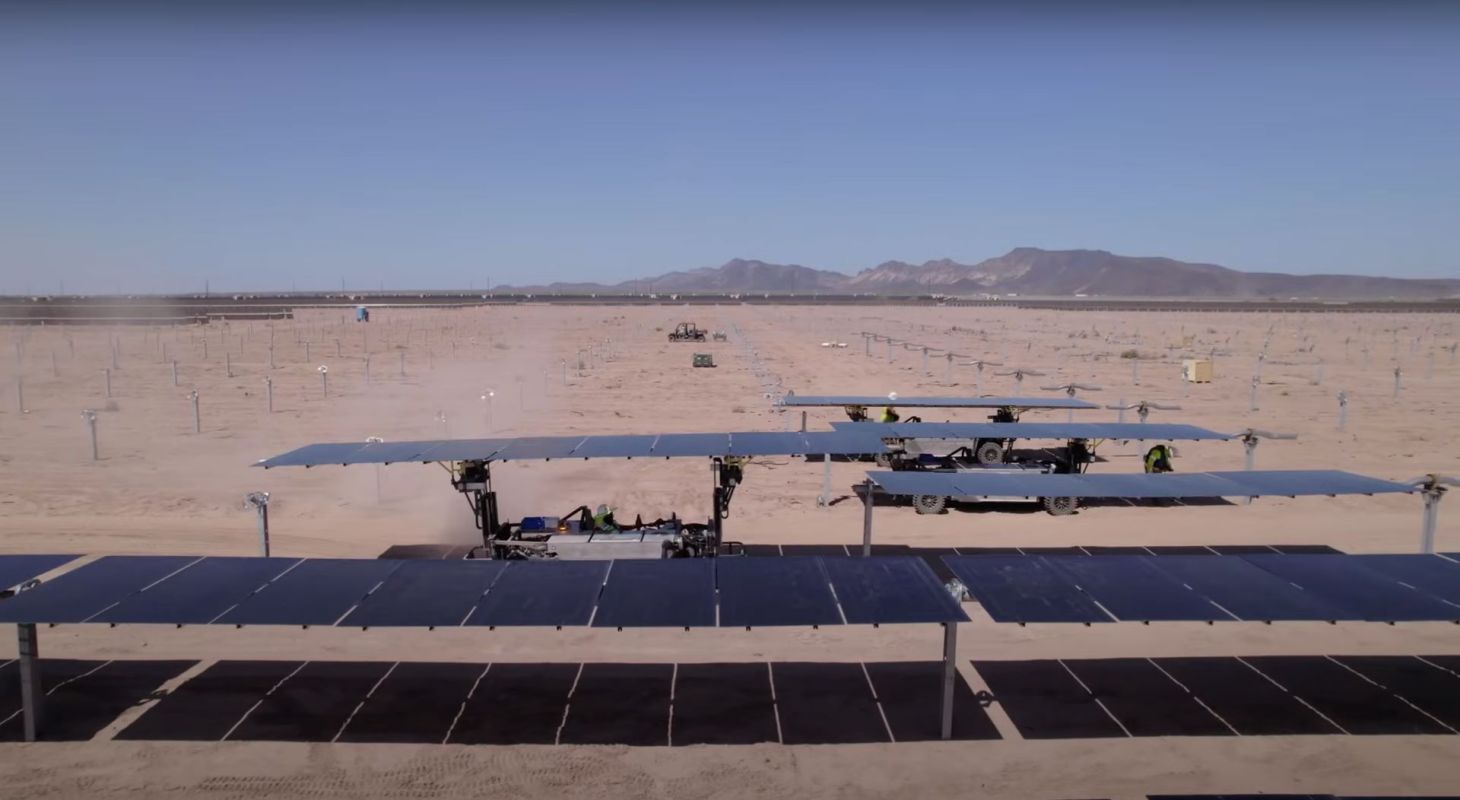Terabase Energy has released footage of its solar panel-installing robot, and the mesmerizing video shows a uniquely graceful yet technical display of automation.
As detailed by Electrek, the solar technology company performed its first commercial solar installation with the Terafab robot in Arizona over the summer.
"This milestone marks a pivotal moment in our mission to accelerate solar power plant deployment to meet the Terawatt scale demands of the future," Terabase Energy CEO Matt Campbell said in a press release on the company's website.
The robot installed 17 megawatts (MW) of the 225 MW White Wing Ranch project, which is being done in collaboration with developer Leeward Renewable Energy (LRE) and EPC contractor RES.
"Wow, these 'robots' installing solar panels [look] eerily human," one commenter wrote on the Electrek article.
In recorded history, humans have basically always been looking for ways to make labor easier and more effective, from the wheel in approximately 3,500 BCE to the first programmable machine in 1954, per the National Inventors Hall of Fame.
The conception of Terafab is no exception.
Terabase Energy noted that the robotic system removed the need for heavy lifting of solar equipment — for the first time. It also improved labor productivity by 25%, while providing safer conditions for workers by keeping them out of the blazing-hot sun.
Pollution from oil, gas, and coal is the main reason our planet has been overheating, which is why it's important to transition to clean energy sources, such as solar and wind.
As Energy5 pointed out, though, packaging can contribute "significantly to waste generation and carbon [pollution]" from the solar industry, with some companies using plastic to protect the equipment during transportation.
The "precision" of the Terafab robot, however, means that all of the panel packaging is available for reuse, per Electrek.
And while launches of new technology frequently come with concerns about the job market, the news website pointed out that the Solar Energy Industries Association (SEIA) is hoping for 800,000 new workers by 2030, meaning that the Terafab robot is making things better in the field rather than eliminating opportunities.
"The benefits demonstrated by this project underscore the transformative potential of automation in advancing solar construction practices, enabling us to accelerate and de-risk our project pipeline," Sam Mangrum, the EVP of Project Execution for LRE, said in Terabase's press release.
"White Wing Ranch demonstrates that Terabase's technology can drive substantial progress in solar construction safety, quality, cost, and schedule. We are excited about the possibilities ahead," added Will Schultek, the Vice President of Construction at RES.
Join our free newsletter for weekly updates on the coolest innovations improving our lives and saving our planet.









